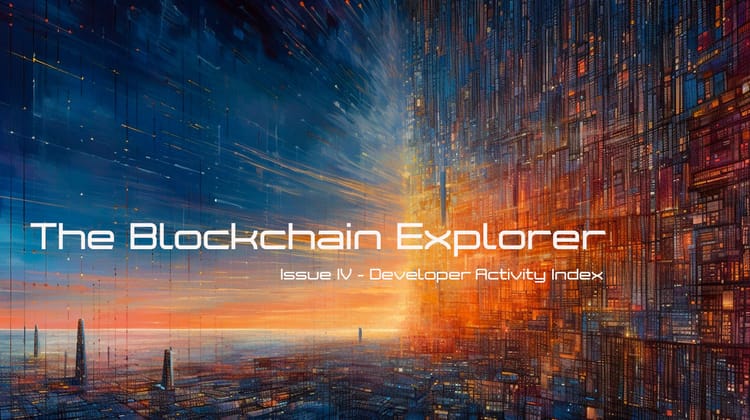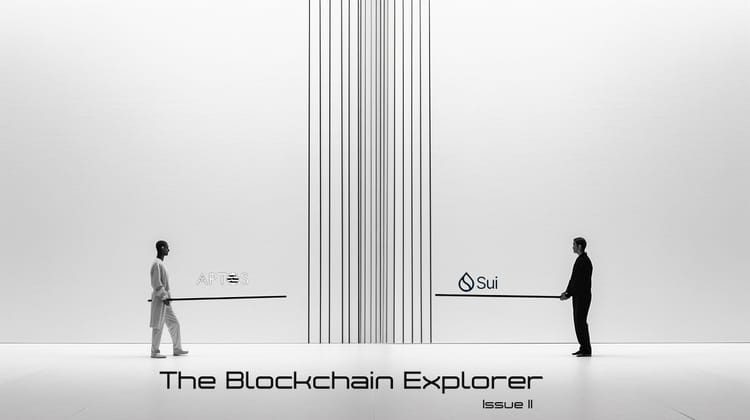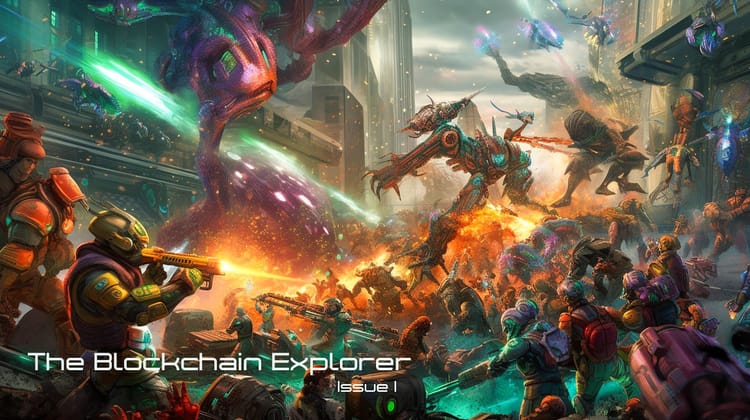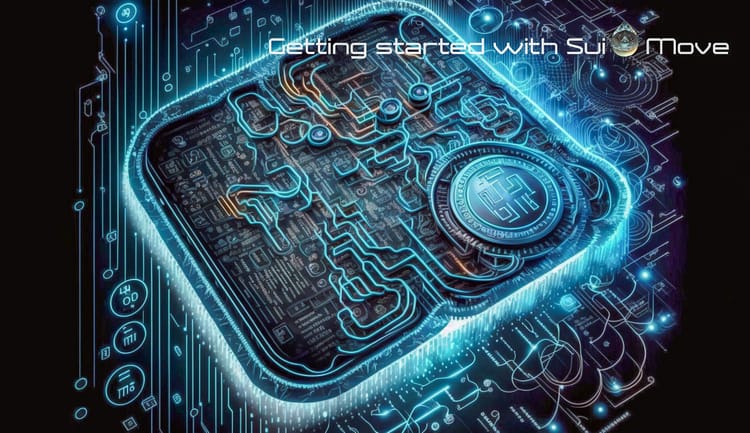Introducing SUI by MystenLabs - A Decentralized, Low-Latency Smart Contract Platform

The world of blockchain technology is constantly evolving, and SUI, a decentralized permissionless smart contract platform, is at the forefront of this innovation. SUI uses the Move programming language, which makes it easy for users to create and manage digital assets, transfer them to new owners, and perform various operations on them.
Maintained by a permissionless set of authorities, SUI operates similarly to validators or miners in other blockchain systems. It employs a Byzantine consistent broadcast protocol between authorities that ensures the safety and security of transactions on the platform. This process not only provides faster performance but also makes SUI more scalable than many existing blockchain systems.
The platform is designed to be efficient and accessible, with parallel processing of smart contracts for optimal performance. It also supports various types of clients, including lightweight clients that can easily verify transactions and more advanced clients that can audit the entire system for security purposes. This flexibility allows SUI to connect with other blockchains in a seamless and trust-minimized way.
SUI's native asset, SUI, is utilized for paying gas for all operations, delegating stake to authorities, and distributing used gas to authorities and their delegates according to their stake and contribution to SUI's operation.
In this article, we will provide an easy-to-understand overview of SUI's innovative features, programming model, and the decentralized system that ensures its safety and efficiency. Join us as we explore the potential of SUI in the ever-growing world of blockchain technology. We will also delve into its performance, real-world applications, and potential impact on various industries such as DeFi, supply chain management, Internet of Things (IoT), and gaming.
Limitations of traditional blockchain systems
The limitations of traditional blockchain systems have long been a challenge in the world of decentralized applications (dApps) and decentralized finance (DeFi). As the number of dApps and DeFi platforms increases, so does the need for higher transaction throughput. Traditional blockchains struggle to accommodate this demand, leading to slow transaction times and higher fees.
Upgrading existing blockchain platforms can be a cumbersome process, often requiring a hard fork or consensus among network participants. This can slow down the adoption of new features and improvements. The security of blockchain systems is paramount, but traditional platforms can be vulnerable to attacks or other issues, such as smart contract vulnerabilities and privacy breaches.
By addressing these limitations, SUI aims to revolutionize the blockchain landscape and pave the way for new and innovative dApps, DeFi solutions, and other use cases in the realms of supply chain management, IoT, and gaming.
The SUI Programming Model: Simplifying the Complexities of Blockchain Development
SUI's programming model is designed to be adaptable and easy to understand, making it a powerful tool for blockchain development. Developers work with Move source code, which they write, test, and verify locally before converting it to Move bytecode and publishing it on the blockchain. The Move language is platform-agnostic, meaning it can be adapted to suit the specific needs of different systems without changing its core structure.
In SUI, code is organized into modules consisting of named struct declarations and function declarations, which are the building blocks of the programming model. A struct declaration is a collection of named fields that are mapped to a particular type, and a function declaration includes a list of parameter types, return types, and instructions that form the function's body.
A unique feature of SUI is its ability to distinguish between different types of ownership, which is not found in other blockchain platforms. This information allows SUI to optimize its performance by executing transactions in parallel, making it faster and more efficient than other systems.
In summary, the SUI programming model simplifies the complexities of blockchain development by offering a flexible, adaptable, and easy-to-understand approach. With its unique features and performance optimizations, SUI is set to become a popular choice for developers looking to build powerful and efficient blockchain applications.
The SUI System: A User-Friendly and Secure Approach to Blockchain
SUI is a unique blockchain system designed with user-friendliness, safety, and efficiency in mind. In this summary, we will delve into the mechanisms that ensure the smooth functioning of the system, including its ability to operate safely and maintain liveness across authorities even in the face of Byzantine failures. Additionally, we will explore the operation of clients, including lightweight clients that require some assurance of the system state without validating its full state.
At its core, SUI is an evolution of the FastPay low-latency settlement system. It has been expanded to operate on arbitrary objects through user-defined smart contracts and utilizes a permissionless delegated proof-of-stake committee composition. Basic asset management by object owners is based on a variant of Byzantine consistent broadcast, which offers lower latency and better scalability than traditional Byzantine consensus implementations.
The high-level interaction between a client and SUI authorities to commit a transaction can be summarized in the following steps:
- A user with a private signing key creates and signs a user transaction to mutate objects they own or shared objects within SUI. After this, user signature keys are not needed, and the remaining process can be performed by the user client or a gateway on behalf of the user.
- The user transaction is sent to SUI authorities, who each check it for validity. Upon successful validation, they sign the transaction and return the signed transaction to the client. The client collects responses from a quorum of authorities to form a transaction certificate.
- The transaction certificate is then sent back to all authorities. If the transaction involves shared objects, it is also sent to a Byzantine agreement protocol operated by the SUI authorities. Authorities check the certificate and, in case shared objects are involved, also wait for the agreement protocol to sequence it in relation to other shared object transactions. They then execute the transaction and summarize its effects into a signed effects response.
- Once a quorum of authorities has executed the certificate, its effects are final. Clients can collect a quorum of authority responses, create an effects certificate, and use it as proof of the finality of the transaction's effects.
The SUI system is designed to be user-friendly, secure, and efficient. Its unique approach to asset management and transaction processing ensures a high level of performance and reliability, making it an ideal choice for developers and users alike in the rapidly growing world of blockchain technology.
Scaling and Latency in the Sui System: Enhancing Performance and User Experience
The Sui system is designed to scale effectively and provide low latency by optimizing the use of resources, such as CPUs, memory, network, and storage. Increased resources lead to a higher transaction processing capacity and lower latency, resulting in a better user experience.
To ensure efficient scaling, Sui minimizes bottlenecks and points of synchronization that require global locks within authorities. Transaction processing is divided into two phases:
- Ensuring exclusive access to owned or shared objects at a specific version.
- Executing the transaction and committing its effects.
Phase (1) involves acquiring distributed locks at the granularity of objects. For owned objects, this is done through a reliable broadcast primitive, which does not require global synchronization within the authority. Transactions involving shared objects require sequencing using a consensus protocol, which could be a potential bottleneck. However, recent advances in high-throughput consensus protocols have demonstrated that sequential execution is the primary bottleneck in state machine replication, rather than sequencing.
Phase (2) occurs when the version of all input objects is known to an authority and involves executing the Move transaction and committing its effects. Execution can take place entirely in parallel once the version of input objects is known. Move virtual machines on multiple cores or physical machines read the versioned input objects, execute, and write the resulting objects from and to stores. Execution is idempotent, which makes it easy to recover from crashes or hardware failures.
This design allows transactions that are not causally related to each other to proceed in parallel. Smart contract designers can therefore create data models and operations within their contracts to take advantage of this parallelism.
Check-pointing and state commitments are computed off the critical transaction processing path to avoid blocking the handling of fresh transactions. Reads can benefit from aggressive and scalable caching. Authorities sign and make available all data that light clients require for reads, which can be served by distributed stores as static data.
Latency in the Sui system is controlled by smart contract designers, depending on whether their operations involve owned or shared objects. Operations involving owned objects require two round trips to a quorum of authorities to reach finality, while operations involving shared objects require a consistent broadcast to create a certificate and processing within a consensus protocol, leading to increased latency.
In summary, the Sui system provides efficient scaling and low latency by optimizing resource usage and minimizing bottlenecks. This ensures a high-performance and user-friendly experience in the world of blockchain technology.
Conclusion: Unleashing the Future of Blockchain with Sui
The Sui System stands as a groundbreaking innovation in the blockchain space, poised to redefine the industry by addressing the limitations of traditional blockchains while enhancing performance, user experience, security, and development simplicity.
- Scaling and Latency in the Sui System: Enhancing Performance and User Experience Sui has revolutionized the performance of blockchain systems by tackling the issues of scaling and latency. Its unique approach to causally ordering transactions enables massive parallel execution, resulting in unprecedented performance levels. By providing rapid transaction finality and low-latency responses, Sui not only enhances the user experience but also facilitates the adoption of blockchain technology across a diverse range of industries and applications.
- The SUI System: A User-Friendly and Secure Approach to Blockchain The Sui System has been designed to prioritize user-friendliness and security. It offers a robust and resilient platform that maintains its security properties even under adverse network conditions or attacks, setting it apart from traditional blockchains. Furthermore, the efficient local read operations and object-centric data model allow for authenticated reads at low granularity and latency, ensuring a seamless user experience.
- The SUI Programming Model: Simplifying the Complexities of Blockchain Development Sui's innovative programming model simplifies the complexities of blockchain development by providing an asset-centric programming model and an object-centric data model, which enables composable objects and NFTs. Sui Move, a blockchain-oriented programming language, further eases the development process, empowering developers to create and deploy smart contracts with less friction and greater efficiency.
In conclusion, the Sui System represents a quantum leap in the evolution of blockchain technology. By addressing the challenges of performance, user experience, security, and development complexity, Sui is poised to unleash the full potential of blockchain, driving adoption and innovation across a myriad of industries and applications. The future of blockchain is here, and it's called Sui...
Please share your thoughts on the article by clicking below Emoji ...
Disclosure
*The information provided on this cryptocurrency blog is for educational and informational purposes only and should not be construed as financial, investment, or trading advice. The authors, contributors, and administrators of this blog are not licensed financial professionals and do not hold any formal qualifications in the fields of finance, economics, or cryptocurrencies.
The content on this blog is based on the authors' personal opinions, experiences, and research, and should not be considered as professional financial guidance. While we strive to provide accurate, up-to-date, and reliable information, we cannot guarantee the accuracy or completeness of the information presented. Cryptocurrency markets are highly volatile, and investments in cryptocurrencies and related assets carry a substantial risk of loss.
Before making any financial decisions or investments, you should consult with a qualified financial advisor or perform your own research and analysis. Any actions taken based on the information provided on this blog are at your own risk, and the authors, contributors, and administrators of this blog cannot be held liable for any losses or damages resulting from the use of the information found herein.
By using this blog, you acknowledge that you have read and understood this disclosure and agree to assume full responsibility for any decisions or actions you take based on the information provided.*








